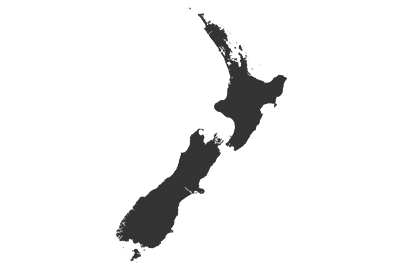
With more than twenty years of experience, sports and advertising photographer Adam Pretty certainly knows how to capture the moment. There are no second chances, especially in sports photography. He was reminded of this again during one of his recent projects: Chasing Ghosts. He photographed paragliders training and flying around the Dolomites, while dangling in the air himself. ‘I was flying tandem, with a pilot.’ Even without being the one doing the steering, it demanded a lot of the photographer and his equipment. ‘I needed a camera that I could rely on. The LUMIX S5 is exactly that: it’s a superb action camera.’
Pretty works for Getty Images and has covered many of the great sports events in his career. Now he’s based in Germany, and he lives pretty close to the Dolomites. That helped with this project, because it made for flexible planning. Everything has to be just right to ensure a safe flight: too much or too little wind, rain, or not enough thermal lift. ‘I’d been paragliding before this, but those flights didn’t go too well, so I was a bit traumatised. The flights in the Dolomites were amazing though. We were really lucky with the weather, especially when you take in consideration that it was already late in the season. For thermal lift, you need the sun’s warmth to heat the air. At the end of the season, you don’t always get that lucky.’
The plan for Chasing Ghosts was to photograph two of the world’s best paragliders (Tom de Dorlodot and Aaron Durogati) at different locations around the Dolomites, shooting during the day and at night.
‘Aaron was a terrific guide, who was able to bring us to the best places to paraglide. We paraglided at quite a few places in the Dolomites, which made for different kinds of scenery, mountain tops with and without snow, for example.’ To create a special effect, he asked the pilots to wear LED lights during a night shoot. With a long exposure, they left a light trail. Hence the name ‘Chasing Ghosts’.
Capturing the images he wanted was quite a challenge. ‘The first day I missed quite a few shots due to some communication problems. I not only had to direct Aaron and Tom, but I also had to instruct my own pilot.’ Instead of getting frustrated, it only motivated him to get out there and do it again. ‘The second day was a lot better. The communications worked, and I knew what I could expect. Predicting where the pilots would end up was easier, which meant I could do a better job at instructing my pilot where to go.’ Working with a camera at that height is already a challenge. ‘I had the camera on a gimbal. Every time we made a hard turn, the G-forces meant that even a lightweight camera felt heavy. Even after a short flight, my arms were cramped. I was really happy with the LUMIX S5, not only because of its compact size and lightness, but also because of its reliability and the improved AF.’ A fresh look at things, that’s what sets Pretty aside from other sports photographers. ‘I build my images from the background up. I like clean lines, graphics and shapes. Sports photography is not just about capturing a moment.
I want to create an image that invites you to look longer, an image that cannot be assimilated in one second, that makes you want to ask questions.’ He makes his best photos on instinct. ‘I tried to avoid other photographers’ images of paragliding before I went paragliding myself; I want a fresh perspective on things. I seem to work best under pressure, when I don’t have time to think things over. If I think about an image for too long, it affects the results. Somehow, it doesn’t look fresh or spontaneous to me.’ Not giving up and trying new things, that’s also important for Pretty. ‘If you aren’t willing to learn and make mistakes, you should do something else. A lot of people I’ve spoken to over the years are negative about photography, calling it ‘dead’. But there will always be a market for images, especially those that show a different view or a fresh take on things. Every day, new photographers from different backgrounds and parts of the world join our ranks, and each of them have their own perspective. So, in my opinion photography and video have a great future!’

Adam Pretty
Adam began his career as a news photographer at The Sydney Morning Herald in 1997 and his desire to specialise in sport photography saw him move to Getty Images in 1998. Since joining the Getty Images team, Adam has been based in Los Angeles, Sydney, Beijing, Tokyo and Munich where he continues to work today. Adam has photographed nine Olympic Games, and covered assignments around the globe for high profile magazines including Time Magazine, Sports Illustrated, Life Magazine, Harpers Bazaar and Marie Claire. Always seeking new challenges and experiences in photography, in 2007 Adam decided to broaden his expertise and began shooting advertising projects alongside his sports editorial work. Through both his sports and advertising photography, Adam constantly challenges people’s perceptions with fresh ideas – an element of his job that he particularly enjoys.







